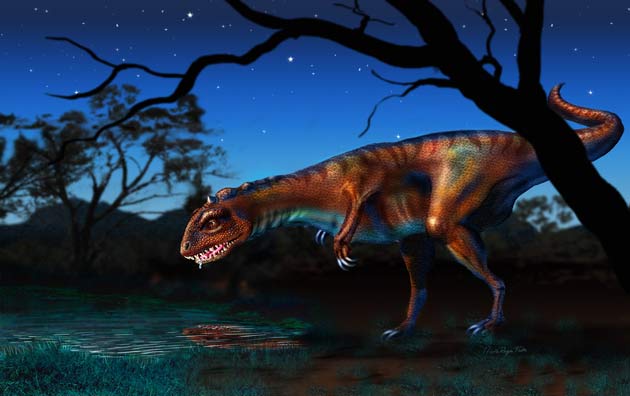
Analysis of ancient sediment taken from the bottom of the Atlantic Ocean supports the view that the dinosaurs' extinction was caused by a single rogue meteor striking Earth, and not by multiple space rock impacts, a new study finds.
"The sample we found strongly support the single-impact hypothesis," said lead researcher Ken MacLeod of the University of Missouri-Columbia.
Geological evidence shows that a giant meteorite about six miles wide smashed into the Yucatan Peninsula close to the current Mexican town of Chicxulub 65 million years ago. According to the standard theory, the impact set off volcanic eruptions, massive earthquakes and tsunamis that sent dust flying high into the atmosphere, where it lingered and blocked the sun's light for decades or centuries.
Deprived of the sun's life-giving rays, plants and animals began to die. The dark skies also caused temperatures to plummet and white-hot debris falling back to Earth ignited wildfires all over the globe, the smoke of which mixed with rain clouds to create a scalding acid downpour.
Many scientists believe the combined calamities killed off most of the life on Earth, including dinosaurs, in the so-called K-T extinction event .
A small team of scientists, however, have argued that a single meteorite was not enough to end the dinosaurs' reign, and that the Yucatan impact occurred 300,000 years too early. The biggest proponent of this alternative scenario is Gerta Keller of Princeton University.
Keller thinks that the Chicxulub impact, combined with volcanoes in India and global warming, only upset the ecological balance, causing many species to shrink in size. But these things weren't enough to trigger a mass extinction, she believes. Instead, Keller speculates that a second, currently unidentified meteor crashed sometime after Chicxulub.
Get the world’s most fascinating discoveries delivered straight to your inbox.
But a new examination of sediments taken from the Demerara Rise in the Atlantic Ocean casts fresh doubt on Keller's minority view.
Located some 3,000 miles from the Yucatan Peninsula, the Demerara Rise is considered an intermediate distance from the impact site. Interpretation of samples collected from locations close to the crater are complicated by factors such as waves, earthquakes and landslides that were triggered by the impact and which shuffle the sediment layers. Samples from farther away, meanwhile, received little impact debris and are much less helpful in recreating events.
The Demerara Rise sample thus provides an unusually clear picture of the events at the time of the mass extinction that claimed the dinosaurs, MacLeod argues. Analysis revealed a unique layer composed of impact-related material, but none above or below that layer.
The Demerara Rise sediment, therefore, shows "no support for multiple impacts or other stresses leading up to or following the deposition of material from the impact," MacLeod said.
The findings are detailed in an online version of the Geological Society of America Bulletin.
Explore Dinosaurs
- The Biggest Carnivore: Dinosaur History Rewritten
- How Dinosaurs Might Have Walked
- A Brief History of Dinosaurs
Asteroids and Dinosaurs
